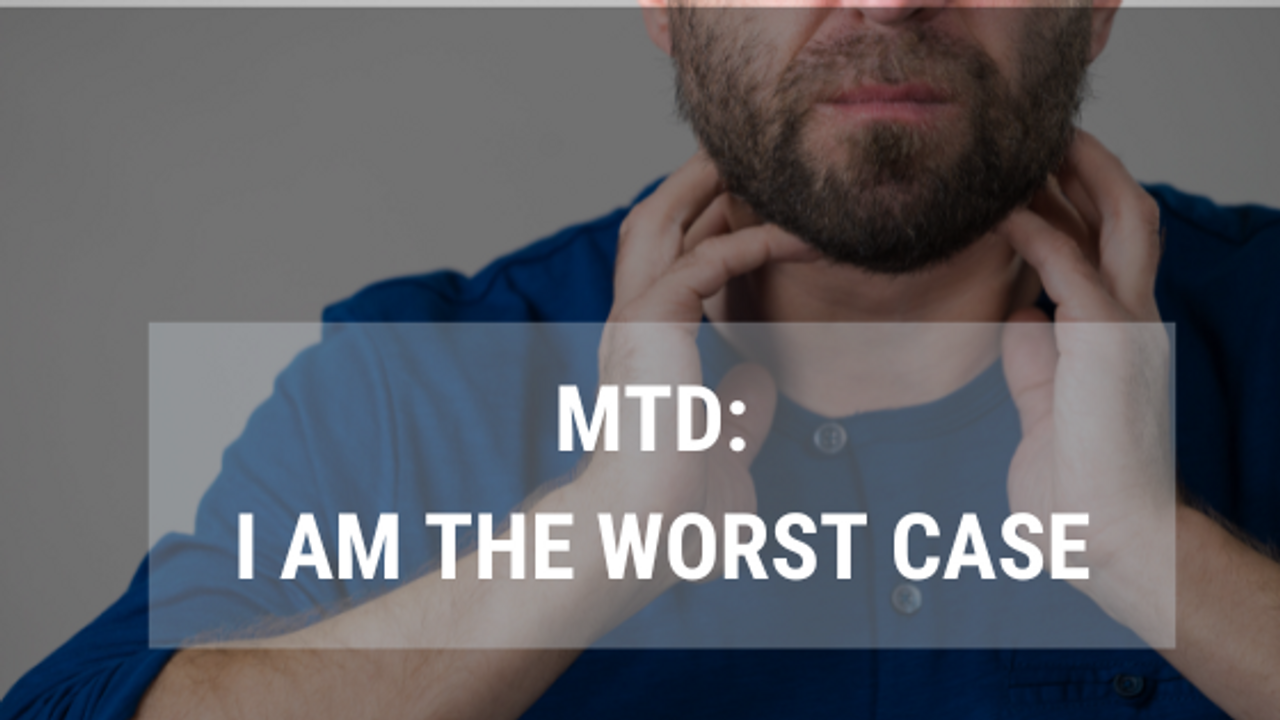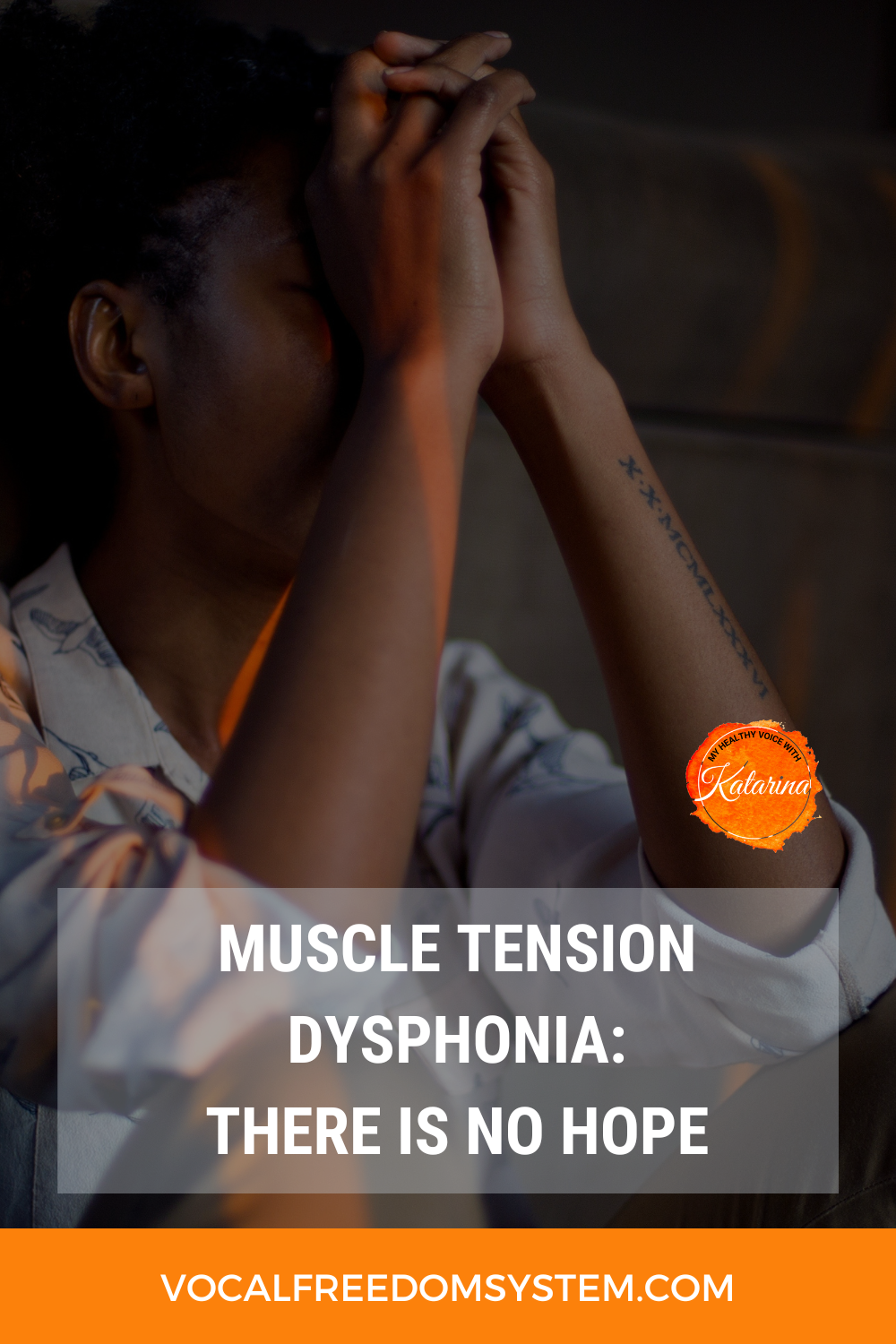
Muscle Tension Dysphonia: I Am the Worst Case
Let me tell you a story that turned one of my client’s beliefs “there is no hope for me, I am the worst case” to “I am free to use my voice”. This read takes only 5 minutes or you can hear the story from me (if you want watch the video below to hear me tell the story).
And in the next few minutes, I will share a story that changed my client’s voice and life and that may change your belief about your own voice.

Muscle Tension Dysphonia
”I am the worst case of vocal pain you’ve ever seen” read the message that I got from a new client of mine. We had a Zoom consultation, meeting for the first time, together with his assistant who was doing all the talking, while my client was communicating through the Zoom chat. My client refused to use his voice completely because he would experience a burning sensation in his throat and sharp vocal pain after only a few minutes of talking.
My client did all the right things. After a short bout of flu, he was experiencing some voice issues, such as throat tension and hoarseness. As a professional voice user, who used his voice daily, he went to an ENT to have his voice evaluated. There was some reddening visible on the vocal folds, but no other structural changes.
Muscle Tension Dysphonia: Am I the Worst Case?
The doctor diagnosed Muscle Tension Dysphonia and recommended voice rest for a few days. Unfortunately, no other recommendations or a follow up appointment was made so my client put himself on voice rest for several weeks. I cannot even imagine not talking for such a long time. But every time my client started to talk, he felt pain. And the pain showed up sooner and grew bigger every time he opened his mouth. So no wonder he developed a belief that he is the worst case of vocal pain with no hope of improvement.
Vocal Pain
During our meeting, I explained very briefly how pain works. I told him that vocal pain is not a reflection of tissue damage in the throat. Burning sensation does not mean that there is something burning in the throat. Pain is a complex phenomenon and it is greatly affected by how we feel about our voice. Fear is a big factor in triggering pain or discomfort.
Of course, my client did not want to believe me. He was even upset with me that I would even suggest something like that. And his anger made him talk.
I remember that moment during our Zoom call, where he angrily looked at the camera and started to talk. He was convinced that after a few minutes his throat would be on fire.
But after 10 minutes or even more, we were still talking and no pain. We further discussed vocal pain, voice and mind exercises to reduce his fear of talking, to bring his voice back fully after such a long break.
After a few weeks, I received a very nice email from my client, saying that his voice is on the mend, that he no longer experiences vocal pain. He wrote that it was a very humbling experience for him that taught him the power of mind over his body and voice.

There IS Hope
And I share this story with you in hopes that you will understand that there is always something that can be done for your voice. It is true that not all voice problems can be fully resolved but a huge majority can.
I believe that there is always something we can do to improve our voice, no matter what you are dealing with or even if you have a healthy voice. There is always something we can make more efficient or easier or different. But if you believe that there is no hope for you, this single belief will prevent you from finding out what your voice CAN do.
So I challenge you today to re-evaluate your belief system. Is it holding you back from achieving your dream voice?


